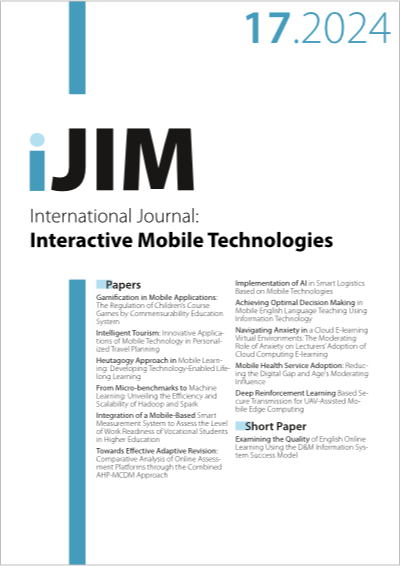Achieving Optimal Decision Making in Mobile English Language Teaching Using Information Technology
DOI:
https://doi.org/10.3991/ijim.v18i17.51091Keywords:
information technology, English education, optimal decision-making, network data envelopment analysis, performance evaluation, decision process model, teaching effectiveness, optimization strategiesAbstract
In the context of globalization, the quality and effectiveness of English education have become increasingly significant. The rapid advancement of information technology has provided a wealth of tools and methods for enhancing English education. However, achieving optimal decision-making in the context of information technology to improve the overall efficiency of English education remains a pressing issue. Network data envelopment analysis (network DEA), an effective performance evaluation tool, systematically analyzes and optimizes complex multi-stage decision processes, thereby providing scientific support for educational decision-making. Although numerous studies have attempted to incorporate information technology into educational decision-making, most methods focus on single-stage processes and lack systematic analysis of the entire decision process. This study constructs and designs a decision process model for mobile English education based on network DEA, systematically analyzing the input-output relationships at each stage and proposing optimization strategies and implementation plans to achieve optimal educational decisions. This study not only addresses the shortcomings of existing methods by providing more comprehensive and scientific decision support but also offers crucial references for educational administrators in formulating and implementing effective teaching strategies in the context of information technology.
Downloads
Published
How to Cite
Issue
Section
License
Copyright (c) 2024 Nan Zhang (Submitter); Xiaoxiao Fu, Dandan Pan

This work is licensed under a Creative Commons Attribution 4.0 International License.



